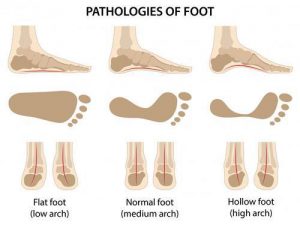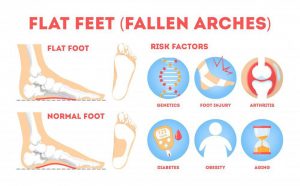Is Adult-Onset Flatfoot a Serious Condition?
Adult-onset flatfoot, commonly known as falling arches, is a fairly prevalent issue in the United States, affecting roughly five million people. The fortunate ones are unaffected by the development, while others are left with constant and nagging agony. Whatever impact it has on your life, the good news is that solutions exist. The sooner we intervene, the sooner we can restore your normal foot function.
Because adult-onset flatfoot is so complicated, you’ll need the help of a skilled podiatrist like the ones at Neuhaus Foot & Ankle. We have a thorough understanding of adult-onset flatfoot and the tools you’ll need to correct it.
Here’s a look at how adult-acquired flatfoot develops and when it has to be addressed to give you an understanding of what we’re up against.

The Falling Of An Arch As previously stated, adult-onset flatfoot is also known as fallen arches. The arches in your feet are formed by your metatarsal and tarsal bones and are meant to distribute your weight evenly.
Adult-onset flatfoot is a progressive ailment that most commonly affects persons in their 40s, while it can affect anyone at any age. Women, particularly pregnant women, are more susceptible to adult-onset flatfoot.
Posterior tibial tendon dysfunction (PTTD) is one of the most prevalent causes of adult-acquired flatfoot, and it happens when the tendon that goes from your calf to the inside of your foot is injured, usually owing to overuse. This tendon’s principal function is to support your arches when you move, thus if it fails to do so, your arches will begin to fall.
Your foot and ankle compress inward when your arches fall, causing discomfort in your posterior tendon as well as your heels and ankles. This pain may come and go as you use it, or it may become a permanent companion over time.

Is Adult-Onset Flatfoot a Serious Condition?
Restoring Your Arches If you have adult-onset flatfoot, we recommend treating it conservatively with custom orthotics and physical therapy at first. We can realign the structures of your feet and ankles with orthotics, preventing future collapse of your arches.
We can use focused exercises in physical therapy to improve the support network of your arches.
We may offer surgery to restore your arches if your adult-acquired flatfoot does not respond to these conservative treatments and you are still in a lot of discomfort.
